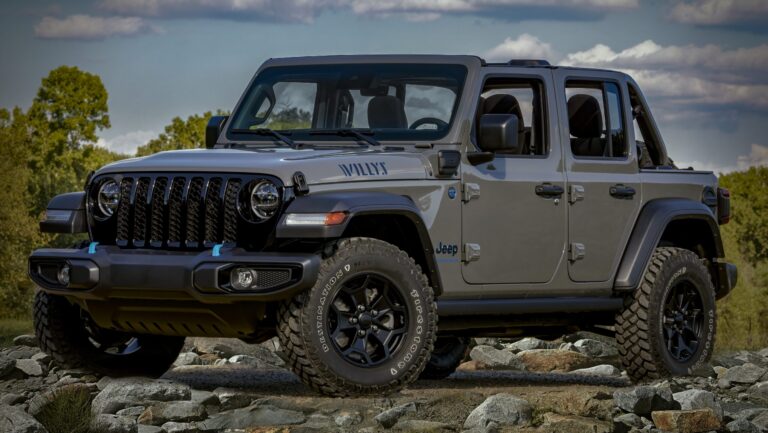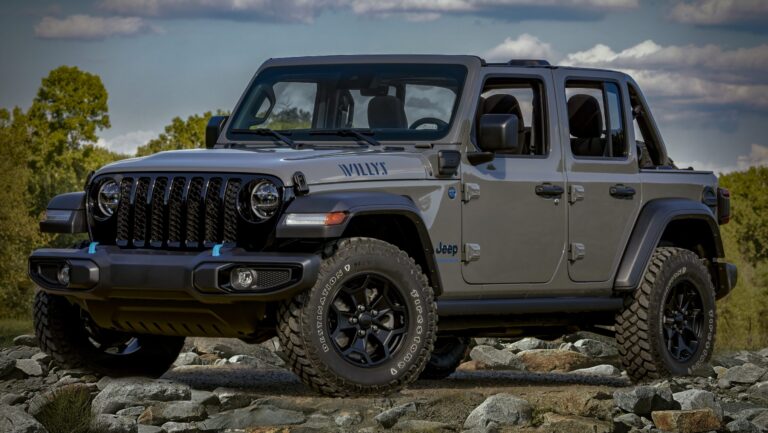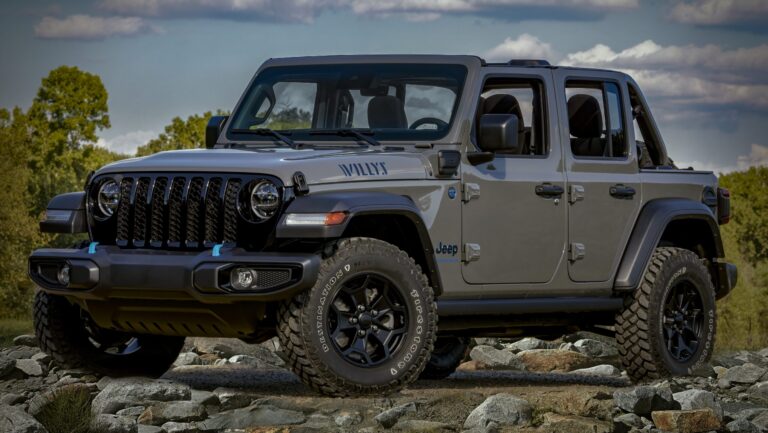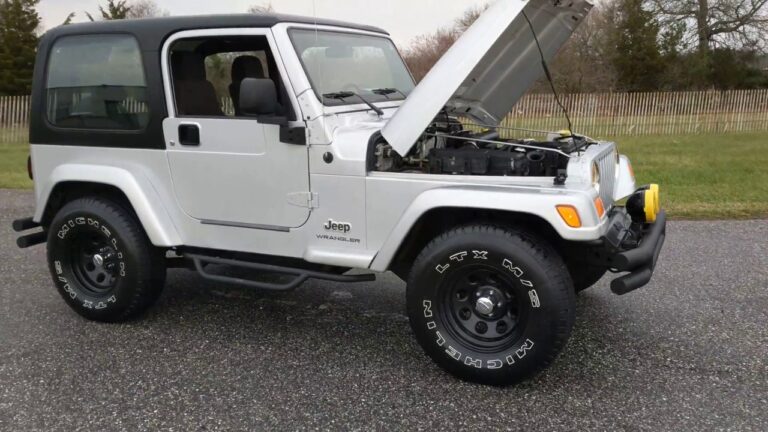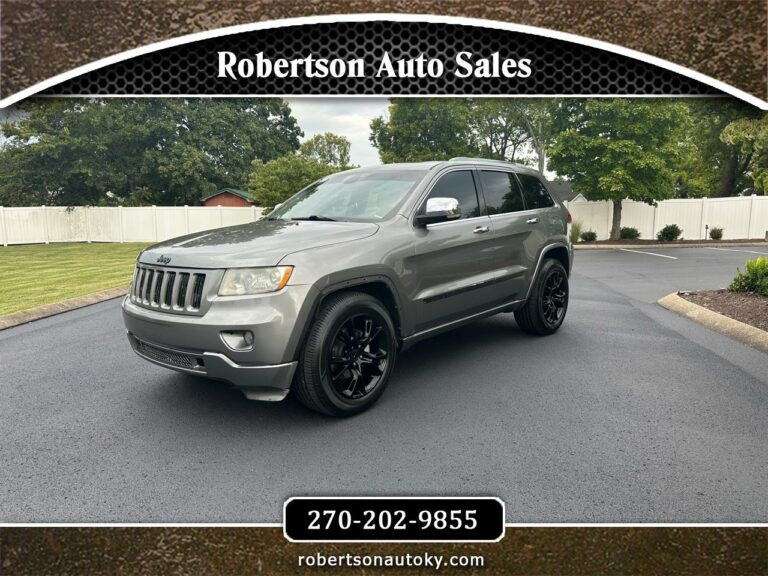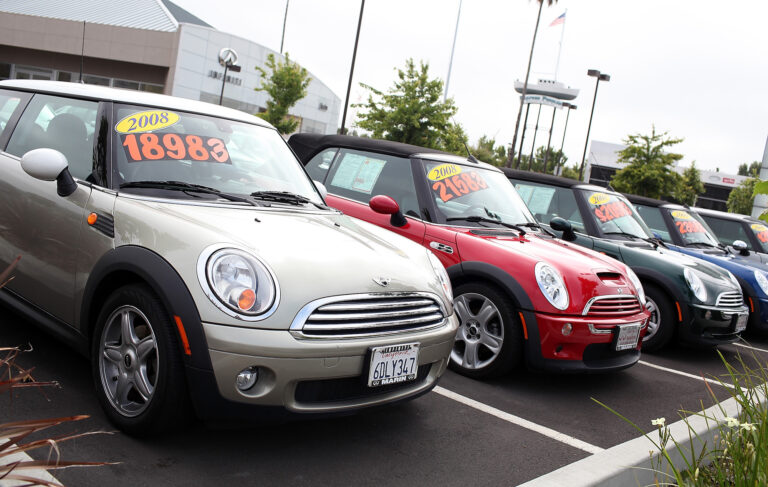1949 Willys Jeep For Sale: Embarking on a Timeless Adventure
1949 Willys Jeep For Sale: Embarking on a Timeless Adventure jeeps.truckstrend.com
The allure of classic vehicles often lies in their ability to transport us back in time, offering a tangible connection to history and a driving experience unlike anything found in modern machinery. Among these revered classics, the 1949 Willys Jeep stands out as an iconic symbol of American ingenuity, post-war utility, and rugged individualism. More than just a vehicle, a 1949 Willys Jeep for sale represents an opportunity to own a piece of automotive legend, whether for restoration, off-road adventures, or simply the joy of collecting. This comprehensive guide will navigate the fascinating world of acquiring and owning one of these timeless machines, providing insights, practical advice, and a detailed look at what makes the 1949 Willys Jeep a truly special find.
A Glimpse into History: The Enduring Legacy of the 1949 Willys Jeep
1949 Willys Jeep For Sale: Embarking on a Timeless Adventure
The year 1949 marked a pivotal period for Willys-Overland, as it continued to evolve its civilian Jeep line from the wartime MB. The primary models available in 1949 were the CJ-2A (Civilian Jeep, 2nd generation, produced until 1949) and the nascent CJ-3A (Civilian Jeep, 3rd generation, introduced in late 1948). Both models carried forward the rugged DNA of their military predecessor, but were adapted for agricultural, industrial, and recreational civilian use.
The CJ-2A, often dubbed the "Universal Jeep," pioneered features like a tailgate, side-mounted spare tire, and larger headlights, making it more user-friendly. The CJ-3A, while visually similar, introduced a one-piece windshield, improving visibility and offering a slightly more refined (by 1940s standards) driving experience. Both were powered by the dependable "Go-Devil" L-head four-cylinder engine, renowned for its simplicity and robustness. Owning a 1949 Willys Jeep means acquiring a vehicle that helped shape the post-war American landscape, transitioning from battlefields to farms, construction sites, and ultimately, into the hearts of enthusiasts worldwide.
Why Buy a 1949 Willys Jeep? More Than Just a Vehicle
The decision to purchase a 1949 Willys Jeep for sale goes beyond mere transportation; it’s an investment in a unique lifestyle and a piece of history. Here’s why these vintage machines continue to captivate buyers:
- Historical Significance & Collectibility: Owning a 1949 Willys is akin to owning a tangible piece of Americana. Its historical importance as a pioneering civilian utility vehicle makes it a highly sought-after collector’s item.
- Unparalleled Driving Experience: Forget power steering, air conditioning, or automatic transmissions. Driving a vintage Willys is a raw, engaging experience that connects you directly to the road (or trail). It’s a journey back to the basics of motoring.
- Rugged Durability & Simplicity: Built for hard work, these Jeeps are notoriously tough. Their mechanical simplicity means they are often easier to maintain and repair for the mechanically inclined, and parts are surprisingly available.
- Community & Camaraderie: Entering the world of vintage Willys Jeeps opens doors to a vibrant community of enthusiasts, offering a wealth of knowledge, shared experiences, and a sense of belonging.
- Potential for Appreciation: Well-maintained or professionally restored Willys Jeeps, especially those with good provenance, can appreciate in value over time, making them a potentially sound investment.
- Customization & Personalization: Whether you’re aiming for a period-correct restoration or a modified off-road beast, the Willys platform offers endless possibilities for personalization.
Navigating the Market: Types of 1949 Willys Jeeps For Sale
When searching for a 1949 Willys Jeep, you’ll encounter vehicles in various states of condition and restoration. Understanding these categories is crucial for setting expectations and managing your budget.
-
Fully Restored / Show Quality: These Jeeps have undergone a comprehensive, often frame-off restoration, bringing them back to (or exceeding) original factory specifications. They boast pristine paint, rebuilt powertrains, and immaculate interiors.
- Pros: Ready to drive, show-worthy, highest value retention.
- Cons: Highest purchase price, may be too precious for heavy off-roading.
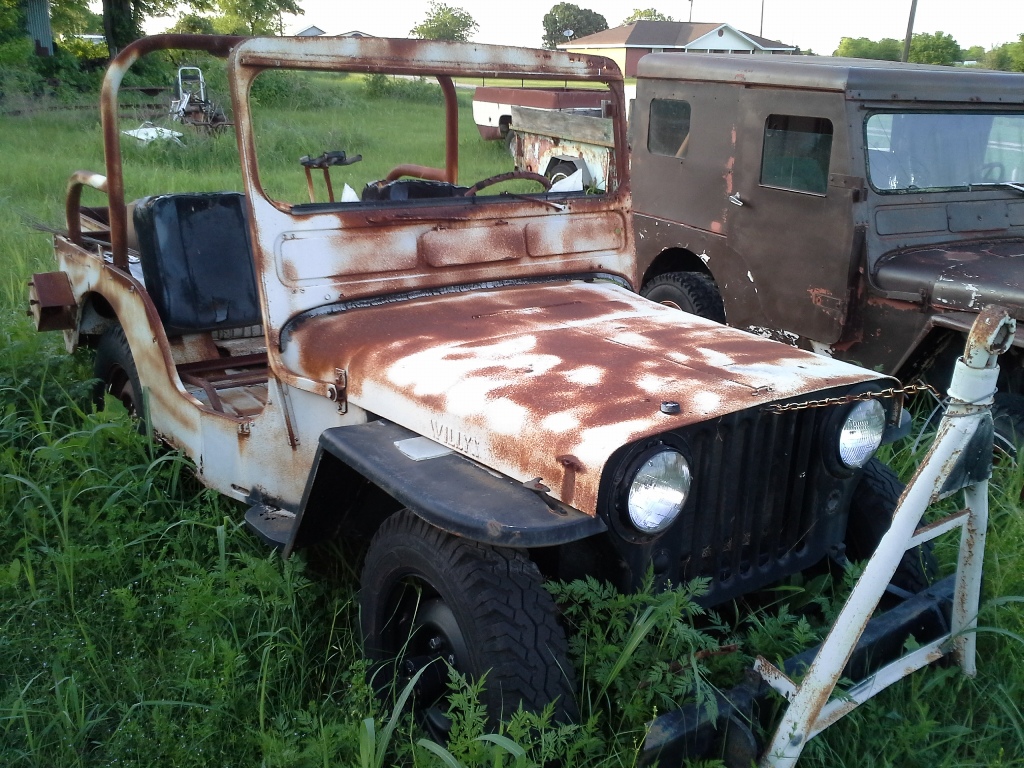
-
Partially Restored / Driver Quality: These are functional vehicles that have had some work done but might not be cosmetically perfect or fully original. They are great for regular driving and can be improved over time.
- Pros: More affordable than fully restored, good balance of usability and charm, opportunities for DIY improvements.
- Cons: May require ongoing maintenance or further restoration to reach show quality.
-
Original / Unrestored with Patina: These Jeeps retain their original paint, interior, and mechanical components, showcasing the wear and tear of decades. They often have a unique character and appeal to purists who value authenticity.
- Pros: Historical integrity, "survivor" status, often lower initial cost.
- Cons: May have mechanical issues, rust, or cosmetic imperfections that need addressing.
-
Project Vehicles: These Jeeps are typically non-running or in very poor condition, requiring extensive mechanical and body work. They are often sold at the lowest price point.
- Pros: Lowest entry cost, ideal for those seeking a full restoration project, allows for complete customization.
- Cons: Requires significant time, money, and expertise; not for the faint of heart.
Key Considerations Before Purchasing Your Willys
Before you commit to a 1949 Willys Jeep for sale, thorough due diligence is paramount.
- Condition Assessment: This is the most critical step.
- Frame & Body Rust: Inspect the frame rails, floorboards, hat channels, and fenders for rust, which is common in these older vehicles. Extensive rust can mean costly repairs.
- Engine & Drivetrain: Check for leaks, unusual noises, and signs of neglect. A test drive is essential to evaluate the engine, transmission, transfer case, and axles. Look for smooth shifting, proper engagement of 4×4, and no excessive play.
- Brakes & Steering: Ensure brakes are functional and steering is responsive, though some play is normal for vintage vehicles.
- Electrical System: Verify lights, gauges, and wiring are in good order.
- Tires: Check for dry rot, uneven wear, and overall condition.
- Authenticity vs. Modifications: Decide if you want a historically accurate vehicle or one with modern upgrades (e.g., engine swap, power steering, disc brakes). Modifications can improve drivability but might reduce collector value.
- Documentation: Always verify the title and VIN. Service records, original manuals, or any historical provenance add significant value and peace of mind.
- Parts Availability: While many parts for Willys Jeeps are reproduced or available from specialty suppliers, some specific components can be rare. Research common replacement parts before buying.
- Your Budget & Intended Use: Be realistic about the total cost, including purchase price, potential repairs, restoration, insurance, and ongoing maintenance. Will it be a show vehicle, a weekend cruiser, or an off-road beast? This will influence the type of Jeep you should buy.
The Buying Process: Tips for a Successful Purchase
- Research Thoroughly: Understand the nuances of the CJ-2A and CJ-3A, common issues, and market values.
- Inspect in Person: If possible, always inspect the vehicle yourself or hire a qualified mechanic specializing in vintage vehicles. A pre-purchase inspection (PPI) is highly recommended.
- Test Drive: Listen for unusual noises, feel for vibrations, and assess how the vehicle handles. Pay attention to the brakes and steering.
- Negotiate Wisely: Don’t be afraid to negotiate the price, especially if you identify issues during inspection.
- Secure Proper Documentation: Ensure a clear title, bill of sale, and any service records are provided and correctly transferred.
- Consider Shipping: If buying out of state, factor in shipping costs and arrange for a reputable transport company.
Owning a Vintage Willys: Challenges and Solutions
While immensely rewarding, owning a 1949 Willys Jeep comes with its own set of considerations:
- Maintenance Demands: Vintage vehicles require more hands-on attention than modern cars. Regular lubrication, fluid checks, and proactive maintenance are crucial.
- Solution: Embrace DIY mechanics, find a local vintage vehicle specialist, and join Willys owner forums for advice.
- Parts Sourcing: While many parts are available, some specific or NOS (New Old Stock) components can be challenging to find or expensive.
- Solution: Utilize online specialty parts dealers, eBay, Willys forums, and swap meets.
- Modern Driving Experience: Lack of power steering, power brakes, air conditioning, and high-speed stability can be challenging for those used to modern vehicles.
- Solution: Appreciate the raw, authentic driving experience. For frequent use, consider tasteful modern upgrades like an electric power steering kit or disc brakes.
- Rust Prevention: Willys Jeeps are prone to rust, especially in damp climates.
- Solution: Store the vehicle in a dry environment, regular cleaning, and consider undercoating or rust inhibitors.
Estimated Price Guide: 1949 Willys Jeep For Sale
Prices for a 1949 Willys Jeep can vary dramatically based on condition, originality, and location. This table provides a general guide:
| Condition Category | Description | Estimated Price Range (USD) |
|---|---|---|
| Project Vehicle | Non-running, significant rust, major mechanical issues, incomplete. Requires extensive work. | $3,000 – $8,000 |
| Fair / Running Project | Runs and drives but needs substantial work (body, paint, mechanical overhaul). Functional but rough. | $8,000 – $15,000 |
| Driver Quality | Functional, presentable but not perfect. May have some flaws, older paint, minor leaks. Good for regular use with some TLC. | $15,000 – $25,000 |
| Good / Partially Restored | Solid condition, older restoration or well-maintained original. Minimal rust, good mechanicals, presentable paint. May have some minor needs. | $25,000 – $35,000 |
| Excellent / Fully Restored | Near-perfect condition, professional restoration, show-quality paint, rebuilt engine/drivetrain, clean interior. Ready for shows. | $35,000 – $60,000+ |
| Concours / Collector Grade | Flawless, frame-off restoration to original factory specifications, exceptional attention to detail, rare features or provenance. | $60,000 – $100,000+ |
Note: These are estimates. Actual prices depend on specific model (CJ-2A vs. CJ-3A, though differences are minor for 1949), originality, modifications, location, and seller motivation.
Frequently Asked Questions (FAQ) about the 1949 Willys Jeep
Q1: Is a 1949 Willys Jeep a good daily driver?
A1: Generally, no. While incredibly robust, they lack modern comforts like power steering, air conditioning, and high-speed stability. They are best suited for recreational use, weekend cruising, or as a secondary vehicle.
Q2: Are parts hard to find for a 1949 Willys Jeep?
A2: Surprisingly, no. Due to their popularity and simple design, many mechanical and body parts are reproduced by specialty suppliers. Online forums and enthusiast communities are also excellent resources for sourcing parts.
Q3: What’s the difference between a 1949 CJ-2A and CJ-3A?
A3: The CJ-2A (produced until 1949) typically has a two-piece windshield and side-mounted spare tire. The CJ-3A (introduced in late 1948, so also a 1949 model) features a one-piece windshield, slightly larger rear wheel wells, and some minor interior changes. Both use the same "Go-Devil" engine.
Q4: Can a 1949 Willys Jeep still go off-road?
A4: Absolutely! These Jeeps were built for rugged terrain. With proper maintenance and suitable tires, they are incredibly capable off-road vehicles. Many owners enjoy them on trails, though caution is advised due to their age and lack of modern safety features.
Q5: Is buying a 1949 Willys Jeep a good investment?
A5: For well-maintained, original, or professionally restored examples, yes, they can be a good investment and appreciate in value. Project vehicles, however, often cost more to restore than their market value, so be prepared for a passion project rather than a financial investment in that case.
Q6: What are the absolute first things I should inspect on a 1949 Willys Jeep for sale?
A6: Focus on the frame for severe rust or damage, as this is the foundation. Then check the engine for major leaks or knocking, and ensure the vehicle can shift into and out of all gears (including 4×4) without grinding. Body rust is common but repairable; structural integrity is key.
Conclusion: Your Journey Awaits
The 1949 Willys Jeep is more than just a classic car; it’s an invitation to a bygone era of rugged simplicity and authentic adventure. Whether you dream of painstakingly restoring a piece of history, hitting the trails in a legendary off-roader, or simply enjoying the admiring glances it draws, a Willys Jeep offers an unparalleled experience. With careful research, a thorough inspection, and a clear understanding of your goals, finding that perfect 1949 Willys Jeep for sale can mark the beginning of a truly rewarding and timeless journey. Start your search today, and prepare to join the ranks of enthusiasts who cherish these iconic machines.


